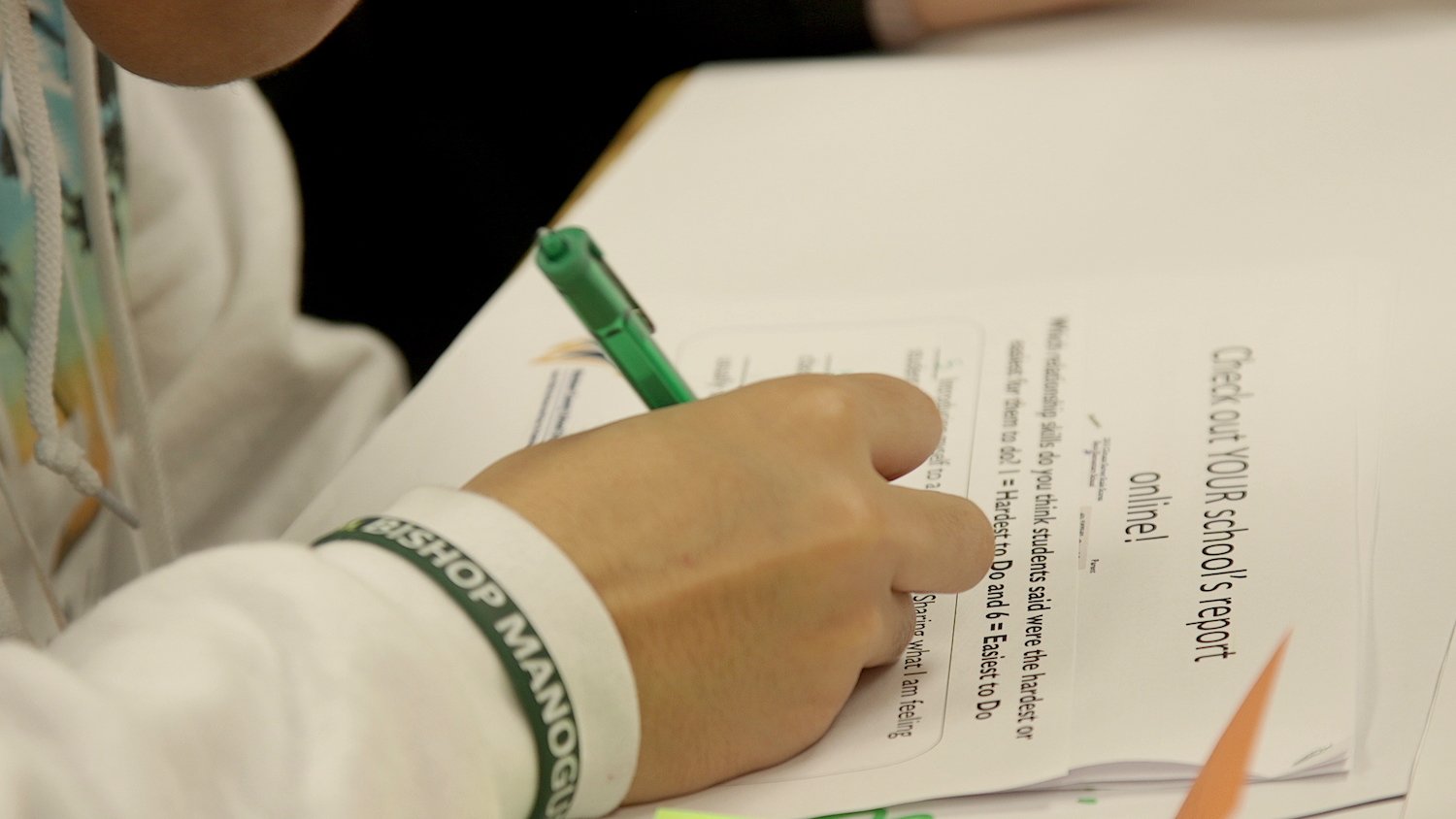"How are our students doing?" "Who needs our support right now?"
If you're an administrator, teacher, or counselor, these questions are likely top of mind throughout the school year.
Keeping a regular pulse on how students are doing is key to building students’ reflective skills that drive engagement and connections while identifying opportunities to provide additional support.
Bi-weekly or monthly student "check-ins" are a great way to gather quick feedback and find the students who need extra help right now—academically and socially. They can also be an effective relationship-building tool to get to know students.
Below, explore a question bank and guidelines for designing your own check-in for students. The questions cover areas such as student well-being, the learning environment, and what students may need immediate help with. Feel free to take and modify the questions as you see fit! If you'd like to learn about administering these questions or adding your own through the Panorama platform, please contact us.

Free Check In Question Template
100+ Questions Across Well-Being, Life Skills, and More
Guidelines: How to Use These Questions
|
What and Who |
|
|
Frequency |
|
|
Taking Action on Responses |
|
Question Bank: Student Well-Being Check-ins
Emotional Well-Being Questions
1. How are you feeling today?
2. What emotion are you feeling the most today?
3. During the past week, how often did you feel [Excited? Happy? Loved? Safe? Hopeful? Angry? Lonely? Sad? Worried? Frustrated?]
Academic Engagement Questions
4. How clearly did I teach things in class today?
5. If your friend missed class today and asked you to explain the lesson, what would you tell them?
6. What was confusing for you today?
7. What was your favorite part of class today?
8. What got in the way of your learning today?
Questions About Social Dynamics and Inclusivity
9. How included did you feel in class today?
10. How much did students in class help each other learn today?
11. Do you feel bullied by other students?
Reflective Questions on School Experience
12. What was the best part of the past week for you?
13. What was the hardest part of the past week for you?
Questions About Support
14. What can teachers or other adults at school do to better help you?
15. What’s the biggest thing I/you could do better tomorrow to help you learn?
16. Would you like to talk privately with an adult from school about how you're feeling or something on your mind?
Questions About Personal Issues
17. How have you been sleeping recently?
18. If we had free breakfast at school, how much would that help you?
19. If you could do laundry at school, how much would that help you?
20. If you could get free clothes (like jackets and shoes) at school, how much would that help you?
21. If we could improve your internet access outside of school, how much would that help you?
Customize Well-Being Check-in Questions to Fit Your School or District's Needs
If you use Panorama Check-ins, you can send a check-in to students using our pre-built question sets or by adding your own questions. Choose or add the questions you want to ask, and send it to your students within minutes.
For example, customize your check-ins questions to gather feedback after a school event, understand the needs of specific student groups like summer school students, track progress on district improvement initiatives, or use check-ins in small-groups.
Integrating Student Check-ins with Annual Feedback Surveys
It's important to check-in with students throughout the school year. Panorama Check-ins allow you to conduct unlimited student well-being check-ins in between your annual benchmarking surveys. With Panorama Check-ins, follow up with students on annual survey questions, identify where support is needed throughout the year, and deliver timely supports. Access all of your survey results in one integrated and easy-to-use platform.
Tips for Responding to Check-in Results
There are many ways to act on check-ins data. Here are tips for responding to the results:
- Follow up with individual students who self-report having academic or social challenges, say they need assistance, are having a tough week, or want to talk privately with an adult.
- Create interventions for individual students or groups of students based on their self-reflection skills like growth mindset, self-management, and self-efficacy.
- Change or improve Tier 1 instruction and practices based on students' feedback on the classroom and school experience.
- Adjust teaching practices and lessons based on post-class feedback from students.
|
Key Takeaways:
|
|
Frequently Asked Questions: 1. How frequently should educators conduct student check-ins? Educators can choose to conduct student check-ins bi-weekly or monthly, depending on their preferences and the needs of their students. These check-ins serve as a complement to annual assessments of students' life skills or school climate. 2. What types of questions should be included in a student check-in survey? A variety of questions can be included in a student check-in survey, covering areas such as student well-being, the learning environment, and specific areas where students may need immediate help. Questions range from emotional well-being to perceptions of classroom inclusivity and academic challenges. 3. What actions should educators take based on the responses received from student check-ins? Educators can take several actions based on the responses received from student check-ins, including strengthening Tier 1 practices, providing individualized support to students, and setting up interventions for individuals or groups who may require additional assistance. 4. Can student check-ins be conducted using digital platforms? Yes, student check-ins can be administered digitally, making it convenient for educators to gather feedback from students. Platforms like Panorama offer pre-built question sets or allow educators to add their own questions, making the process efficient and easy to manage. |







